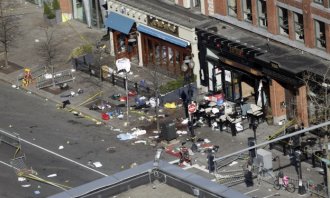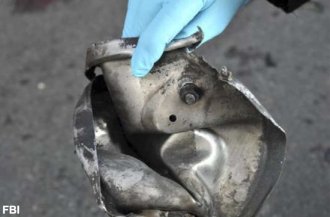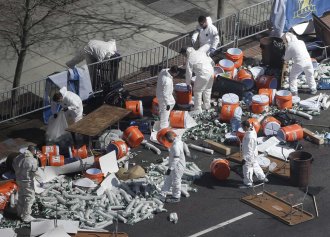As more and more details emerge with the tragedy in Boston and as we now know that there is a suspect in custody, we all breathe a collective sigh of relief. I am sure that all who read this post are shocked and appalled by this needless loss of life and horrific deliberate and inexcusable acts of destruction. All of our hearts go out to the deceased, the survivors, the helpers, and their family and friends.
Lots of questions still exist about what happened at the Boston Marathon Bombing. In April/May/June of 2012, this blog hosted a series of guest posts from Dr. Frederic Whitehurst, PhD who used to be a FBI agent who worked in the FBI crime laboratory in their explosive residue section. He has provided testimony in a great number of bombing related trials in the United States. In this series of posts, he speaks of the analytical difficulties and assay limitations involved in investigating bomb sites.

We are securing and processing the most complex crime scene in the history of our department.
-Boston Police Commission Ed Davis
This is without a doubt true as this one image shows:
With inferences circulating around the internet that the surviving 19 year old younger brother Dzhokhar “Jahar” A. Tsarnaev was somehow perhaps a “victim” of Tamerlan Tsarnaev’s (his 26 year old older brother) alleged domineering personality, the forensics of the various places where Tamerlan and Dzhokhar were in the months leading up to the events and also the days after the bombing may provide some clues into his level of involvement in the preparation and planning of these events.
One of the keys to developing a case against Dzhokhar will be focusing on his level of direct involvement in the preparation and delivery of these pressure cooker bombs.

The Forensics Behind Bomb Scene Investigations and Explosive Residue Analysis
By Dr. Frederic Whitehurst, PhD[1]
Part 4: The Explosion Crime Scene: Sampling and Homogeneity Issues
Part 5: Disposition Homogeneity in explosive scene investigation
Part 6: Contamination and Cross Contamination in explosive scene investigation
Part 7: Contamination by “Render-Safe” acts of explosives
Part 8: Transportation and storage of evidence in explosive scene investigation
Part 9: Chemical analysis in explosive scene investigation
Part 10: Identifying Techniques in explosive scene investigation
Part 11: Interpretation of data in explosive scene investigation
Part 12: Experience: What makes for a proper expert in explosive scene investigation?
________
[1] Executive Director, Forensic Justice Project, Washington, D.C., B.S. Chemistry, 1974, East Carolina University, Ph.D. in Chemistry, 1980, Duke University, J.D., 1996, Georgetown University School of Law. (202)342-6980.



